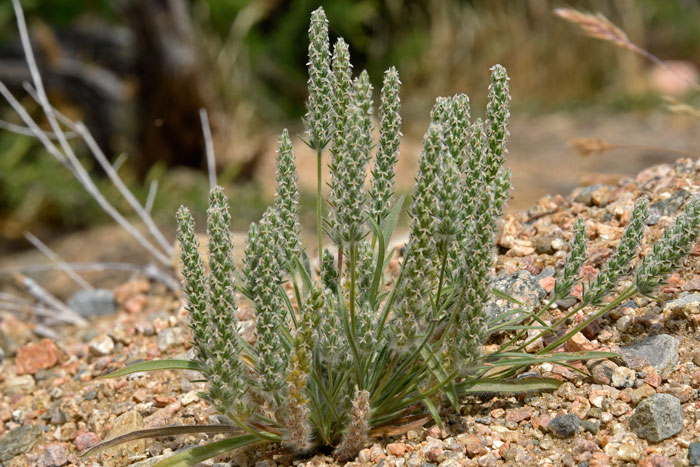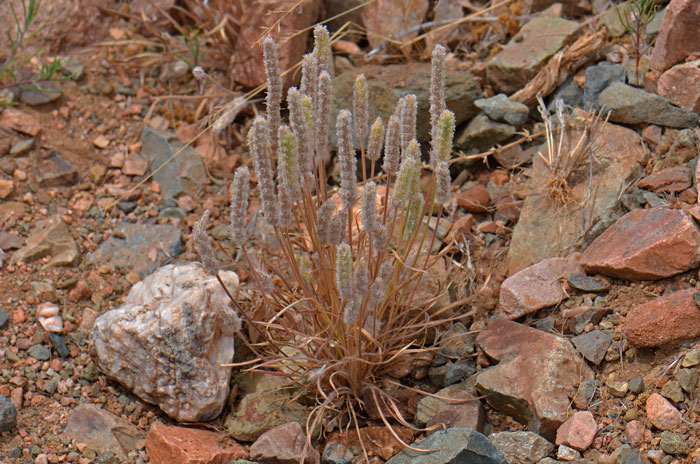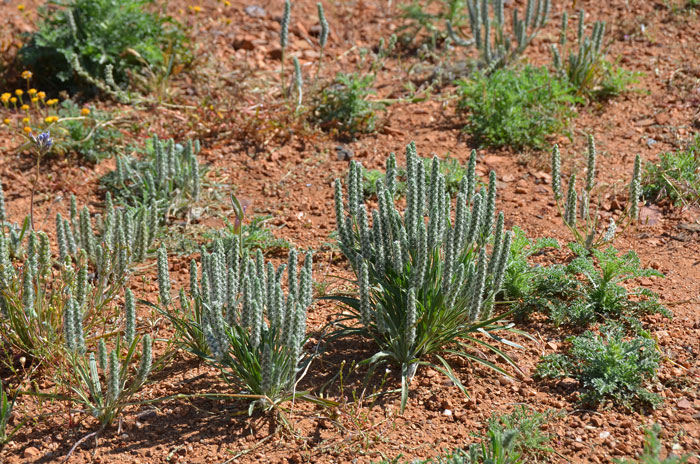Plantago patagonica, Woolly Plantain



Scientific Name: Plantago patagonica
Common Name: Woolly Plantain
Also Called: Pursh Plantain, Woolly Indianwheat, Woolly Plantian, Wooly Indianwheat, Wooly Plantain (Spanish: Pastora)
Family: Plantaginaceae or Plantain Family
Synonyms: (Plantago patagonica var. breviscapa, Plantago patagonica var. gnaphalioides , Plantago patagonica var. oblonga, Plantago patagonica var. patagonica, Plantago patagonica var. spinulosa, Plantago picta, Plantago purshii, Plantago purshii var. breviscapa, Plantago purshii var. oblonga, Plantago purshii var. picta, Plantago purshii var. spinulosa, Plantago spinulosa, Plantago wyomingensis)
Status: Native
Duration: Annual
Size: Up to 7 inches or more.
Growth Form: Forb/herb;
Leaves: Green; leaves up to 4 inches long, margin entire.
Flower Color: White;
Flowering Season: February to July (California - April to June).
Elevation: 1,000 to 7,000 feet.
Habitat Preferences: Dry slopes, grassy slopes, mesas and sandy soils.
Recorded Range: Woolly Plantain is found throughout North America including the United States and Canada. It is found throughout Arizona. It is also native to Mexico and found as far south as Argentina.
North America & US County Distribution Map for Plantago patagonica.
U.S. Weed Information: Plantago patagonica is listed in: Weeds of Nebraska and the Great Plains and Weeds of the West. Plants included here may become weedy or invasive.
Invasive/Noxious Weed Information: No information available.
Wetland Indicator: In North America Plantago patagonica has the following wetland designations: Top Level Regions include the Lower 48 States, ACU, UPL and North America, FACU, UPL
FAC = Facultative, occur in wetlands and non-wetlands
FACU = Facultative Upland, usually occur in non-wetlands, but may occur in wetlands.
Threatened/Endangered Information: In North America Plantago patagonica is listed as Endangered by the state of Ohio.
There are approximately 12 species in Plantago in Arizona and New Mexico; 17 species in California and 15 species in Texas.
Comments: The type plant (P. ignota) is from Fort Verde, Yavapai County, Arizona.
In Southwest Desert Flora also see Common Plantain, Plantago major and Desert Indianwheat, Plantago ovata.
Woolly Plantain has been used by the Keres as an analgesic and anti-diarrheal and by the Hopi as a psychological aid where the "plant given to a person to make him more agreeable". See ethno-botanical uses at Native American Ethnobotany, University of Michigan, Dearborn.

